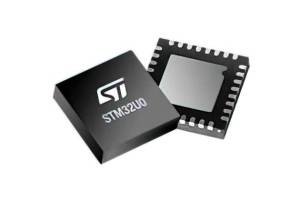Laser diodes are getting popular real fast. These diodes can be useful in plenty of functions, from engraving to creating light shows to even setting up an invisible tripwire. But that is not all. They can do much, much more. In this blog, we will discuss everything there’s to know about laser diodes. So, let us get started.
What Are Laser Diodes?
Imagine a laser diode as a supremely focused flashlight, setting it apart from standard LEDs that scatter light indiscriminately. Unlike the latter, laser diodes project light with precision, akin to a laser pointer’s straight beam. This unique characteristic transforms them into potent instruments for diverse applications, excelling in cutting, engraving, and data reading.
And, let’s not overlook the lighter side – laser diodes offer a playful edge, making them ideal for interactive moments with your feline companion. In essence, laser diodes redefine illumination, channeling light in a way that combines practicality with a touch of whimsy, enriching both creative and everyday experiences.
Handling Laser Diodes
Before we dive into the fun stuff, safety comes first. These laser diodes can be a bit tricky, so always wear eye protection and follow the safety tips from the manufacturer . We want your DIY adventures to be awesome and incident-free!
If you’re a DIY enthusiast, you might go for a laser module – it’s like the plug-and-play version. Connect the red wire to positive voltage, the black wire to negative, and voila! Your laser is good to go. Some modules even have a knob for adjusting the laser power.
Now, if you’re into the nitty-gritty and working with a single laser diode, you’ll need a driver circuit to control the current. Picture it like a traffic cop directing the flow of electricity to keep things smooth. Adjusting a potentiometer lets you tweak the laser’s power.
Decoding the Essence of Laser Diodes
At its core, a laser diode stands as a marvel of modern technology, a specialized diode that commands light in a way that transcends traditional illumination. While regular Light-Emitting Diodes (LEDs) scatter light in all directions, laser diodes channel it into a focused, potent beam. This unique property propels them into a realm of diverse applications, including cutting, engraving, data reading, and, of course, indulging in some feline fun.
Safety Protocols
Before we plunge into the technical marvels, a crucial pitstop awaits us – safety. Laser diodes, with their intense beams, demand meticulous handling. Always prioritize safety by donning appropriate eye protection and adhering diligently to the manufacturer’s safety guidelines. Our goal is to ensure not just an exhilarating DIY journey but a safe one too.
Laser Modules
For many hobbyists, the entry point into the laser diode realm comes in the form of laser modules. These pre-assembled wonders streamline the connection process, with a typical setup involving the coupling of the red wire to positive voltage and the black wire to negative. For those fortunate enough to have a module mounted on a board, a user-friendly potentiometer often awaits, allowing for seamless adjustment of laser power. A stellar example in this category is the Arduino laser module KY-008, a darling of the DIY community.
Single Laser Diode Setup
For the intrepid DIYer seeking more granular control, the standalone laser diode beckons. Here, the creation of a driver circuit becomes imperative to regulate the current coursing through the diode. Enter the LM317 voltage regulator, a linchpin in constructing a simple constant current circuit. This circuit, tailor-made for the OPV332 laser diode, grants the wielder the power to fine-tune laser intensity using a potentiometer. Naturally, if you opt for a different diode, an adept hand at tweaking circuit values becomes your guiding light.
Three-Legged Marvels
Venturing further into the laser diode landscape reveals a subset endowed with three legs – a configuration that adds a layer of sophistication. The anode, taking center stage as the positive pin, serves as the power conduit. The cathode, the negative pin, dutifully completes the circuit. Then, there’s the third pin – the monitor photodiode. This unsung hero monitors the laser’s output power, endowing the user with a level of control particularly valuable in applications like fiber-optic communication systems and 3D sensing.
DIY Laser Diode Projects
Now that we’ve delved into the fundamentals, let’s explore some projects that will not only pique your interest but set your creative sparks ablaze.
Laser Engraving
Ever envisioned adding a touch of individuality to your belongings? Laser diodes make it possible. Whether you embark on the creation of a bespoke laser engraver or repurpose a laser module from yesteryear’s DVD burner, the world of personalization unfurls before you.
Laser Light Shows
Elevate your DIY prowess by creating mesmerizing laser light shows. With meticulous control over color, intensity, and patterns, you can transform any space into a canvas of visual splendor. This amalgamation of technology and artistry opens up a realm of endless possibilities for creative expression.
Invisible Tripwires
Yearning for a dash of mystery in your projects? Crafting invisible tripwires using laser diodes introduces an element of intrigue. Whether you’re developing a security system or weaving a fun-filled obstacle course, the fusion of mystery and technical finesse is bound to leave an indelible mark.
Advantages and Disadvantages of Laser Diodes
Now that we’ve explored the exciting world of laser diodes, it’s time to delve into the nuanced landscape of their advantages and disadvantages. Understanding these aspects is crucial for harnessing the full potential of laser diodes in diverse applications.
Advantages
Precision and Focus
Laser diodes stand out for their unparalleled precision. The ability to focus light into a concentrated beam makes them invaluable in applications where accuracy is paramount, such as in cutting and engraving.
Diverse Applications
Laser diodes find applications across a broad spectrum, from industrial processes like material cutting to medical procedures such as laser surgery. Their versatility makes them indispensable in various fields.
High Energy Efficiency
Laser diodes are known for their efficiency in converting electrical power into coherent light. This characteristic not only conserves energy but also makes them suitable for battery-powered devices and portable applications.
Rapid Modulation
The fast modulation capability of laser diodes is a key advantage in communication systems. This property facilitates high-speed data transmission, especially in fiber optic networks.
Miniaturization
The compact size of laser diodes enables their integration into smaller devices and systems. This miniaturization is particularly advantageous in fields like electronics and telecommunications.
Long Lifespan
Laser diodes generally exhibit a longer lifespan compared to traditional light sources, reducing the need for frequent replacements. This longevity is especially beneficial in applications where reliability is crucial.
Direct Modulation Capability
The direct modulation feature allows for easy adjustment of laser power by varying the current. This simplicity enhances the usability of laser diodes in different scenarios, from communication devices to DIY projects.
Solid-State Reliability
Being solid-state devices, laser diodes are more robust and less prone to mechanical failures. This reliability is advantageous in environments where durability is essential.
Wavelength Customization
The availability of laser diodes in various wavelengths offers flexibility for customization. This is particularly important in applications like spectroscopy, where specific wavelengths are required.
Ease of Integration with Electronics
Laser diodes can be seamlessly integrated into electronic circuits, enhancing their compatibility with modern electronic systems and devices.
Disadvantages
Temperature Sensitivity
Laser diodes are sensitive to temperature variations, and excessive heat can affect their performance. Adequate thermal management is crucial to mitigate this drawback.
Beam Divergence
The inherent beam divergence of laser diodes can limit their effectiveness in applications that demand a tightly focused beam. This characteristic may require additional optics for correction.
Safety Concerns
The intense beams produced by laser diodes pose safety risks, necessitating the use of protective eyewear and adherence to strict safety guidelines. Mishandling can lead to eye injuries or other hazards.
Cost of Fabrication
The initial cost of fabricating high-quality laser diodes can be relatively high. This cost factor may impact their widespread adoption, especially in cost-sensitive consumer applications.
Noise Generation
Laser diodes can generate higher levels of noise, particularly during certain modulation schemes. In applications where low noise is critical, additional measures may be required for noise reduction.
Spectral Width
The spectral width of laser diodes is typically broader than that of some other laser types. In applications requiring a narrow spectral linewidth, this characteristic may be a limitation.
Catastrophic Optical Damage (COD)
Laser diodes are susceptible to COD, where high optical power can damage the semiconductor material. This imposes constraints on the maximum optical power that can be emitted.
Complex Drive Circuitry for Single Diodes
Designing and implementing precise drive circuitry for individual laser diodes can be complex. This complexity increases when aiming for fine control over laser power.
Limited Coherence Length
The coherence length of laser diodes is generally shorter compared to other laser sources. This limitation can impact their performance in applications requiring long coherence lengths.
Dependency on Semiconductor Material Quality
The performance of laser diodes is highly dependent on the quality of the semiconductor materials used in their fabrication. Variations in material quality can affect consistency and reliability.
Wrapping Up
In conclusion, laser diodes transcend the realm of mere components; they emerge as conduits to creativity and innovation. From the simplicity of plug-and-play modules to the intricacies of crafting driver circuits, you now wield the knowledge to harness the full potential of laser diodes.
Remember, safety remains paramount, and with the right precautions, your DIY projects can be both exhilarating and secure. So, armed with this newfound understanding, venture forth, experiment, and let the brilliance of laser diodes illuminate your path of creative exploration!





